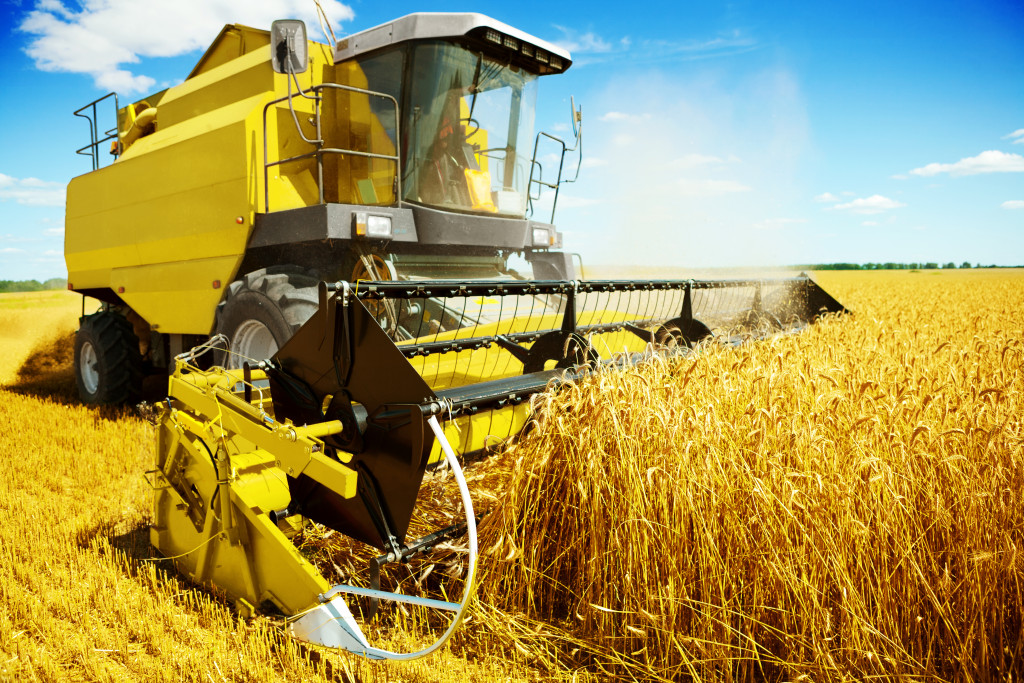Technology has always played a key role in agriculture, and the advancements of recent years have been nothing short of astounding. From GPS-guided tractors to drones that help with crop mapping, technology is changing how farmers do business. Here are ten ways technology is changing agriculture today.
1. GPS Trackers for Tractors
One of the essential pieces of equipment on a farm is the tractor. Tractors are used for various tasks, from plowing fields to planting crops. In the past, farmers had to rely on maps and their intuition to navigate their areas. However, GPS tracking systems have made it possible for tractors to be guided by satellite, making farming much more efficient. Unmanned vehicles have also been developed to free up farmers’ time for other tasks.
2. Crop Mapping with Drones
Another way technology is changing agriculture is through the use of drones. Drones can be used for a variety of tasks, including crop mapping. Farmers can use data from drones to get a better idea of where their crops are located and where they might need to make improvements. This can help farmers to be more productive and efficient while minimizing the impact on the environment. Drones allow farmers to be more efficient and effective while reducing the impact on the environment.
3. Precision Farming
Precision farming is another way that technology is helping farmers to become more productive and efficient. With precision farming techniques, farmers can use data from satellites, weather stations, and other sources to map their fields and track the progress of their crops. This information can help farmers decide when to plant, how to water, and what kinds of fertilizers to use. Farming has always been a risky business, but precision farming is helping to minimize the risks involved.

4. Automated Irrigation Systems
In the past, irrigation was a time-consuming task that required farmers to turn on and off sprinklers or irrigation pipes manually. However, automated irrigation systems have made it possible for farmers to set up a plan to water their crops on a schedule. This can save farmers a significant amount of time, and it can also help conserve water. Automation is also being used in other areas of agriculture, such as livestock management and crop harvesting.
5. Livestock Tracking
Livestock tracking is another way that technology is changing agriculture. Farmers can use GPS tracking devices to keep track of their livestock. This can help farmers know where their animals are at all times, and it can also help them avoid losing any animals. Tracking devices can also be used to keep track of animal health, which can be important for preventing diseases.
6. Soil Sensors
Soil sensors are another type of technology that is changing agriculture. These sensors can be used to measure the moisture content of the soil, the pH level, and the temperature. This information can help farmers to know when to water their crops, when to fertilize, and when to harvest.
7. Weather Stations
Weather stations are another way that technology is changing agriculture. Farmers can use data from weather stations to plan their planting and harvesting schedules. This information can also help farmers know when to expect storms and how to prepare for them. Sensor networks are also being used to track the movements of pests and diseases, which can help farmers to control these problems.
8. Greenhouse Automation
Greenhouses are becoming more and more popular in agriculture, and greenhouse automation is one of the reasons why. With greenhouse automation, farmers can control the temperature, humidity, and ventilation of their greenhouses with a button. This can help ensure that their crops are getting the optimal growing conditions at all times.
9. Climate-Controlled Greenhouses
Climate-controlled greenhouses are another way that technology is changing agriculture. This type of greenhouse is designed to mimic different climates, allowing farmers to grow a wider variety of crops throughout the year. These greenhouses can be used to grow fruits and vegetables in climates where these crops would not usually be able to thrive.
10. Artificial Intelligence
One of the most exciting trends in agriculture today is the growing use of artificial intelligence. With advances in AI technology, farmers can now monitor and analyze their crops on a 24/7 basis. This helps them to identify problems early and make changes to their growing practices accordingly.
Technology is changing agriculture in several ways. These technologies are helping farmers to become more productive and efficient while minimizing the impact on the environment. Whether it’s using to track livestock or using automated irrigation systems to water crops, technology is revolutionizing agriculture.


